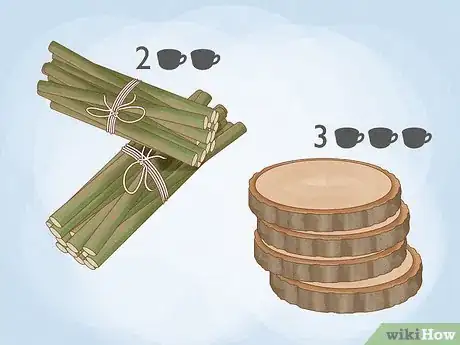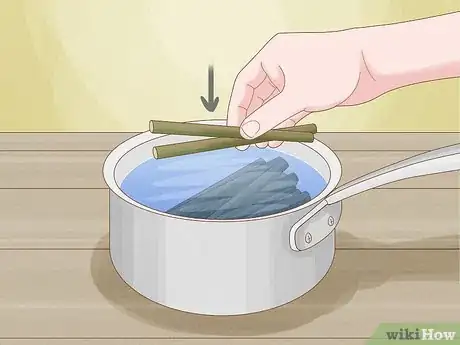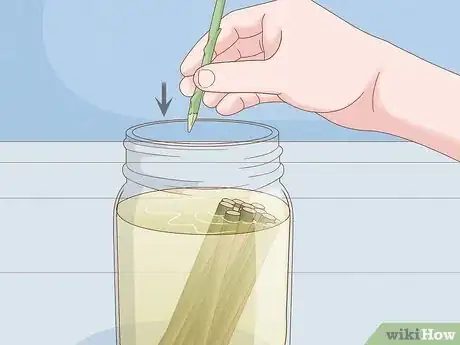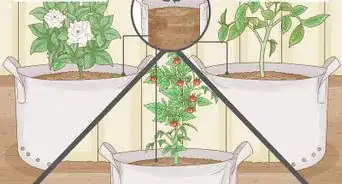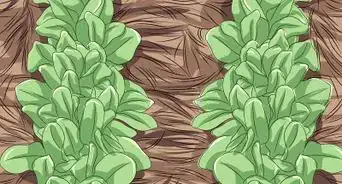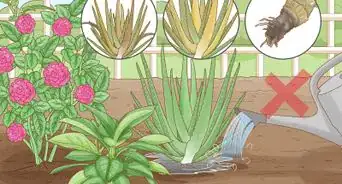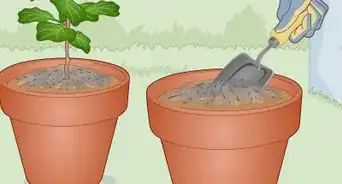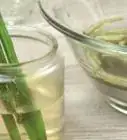wikiHow is a “wiki,” similar to Wikipedia, which means that many of our articles are co-written by multiple authors. To create this article, 16 people, some anonymous, worked to edit and improve it over time.
wikiHow marks an article as reader-approved once it receives enough positive feedback. In this case, 100% of readers who voted found the article helpful, earning it our reader-approved status.
This article has been viewed 83,421 times.
Learn more...
Rooting tonics, also called rooting hormones or rooting compounds, are products that contain plant growth hormones used to stimulate root growth during plant propagation.[1] Many commercially-sold rooting products contain a synthetic form of indolebutyric acid. If you have access to a willow tree or shrub, you can easily make your own rooting tonic, because indolebutyric acid occurs naturally in all varieties of willow trees.
Steps
-
1Collect approximately 2 cups of willow branches or 3 cups of bark.
- Choose small, young branches that are no thicker than a pencil. The highest concentration of hormone exists in the youngest branches.
- You can also use bark from live older willow branches or trunks. If you go this route, you need to use more bark because it contains less hormones.
- Do not gather old dead branches from the ground, as they will contain very little indolebutyric acid, if any.
-
2Cut the willow branches into pieces between 3-to-6-inches long. If using bark, cut it into 2-to-4-inch pieces.Advertisement
-
3Put the willow into a pan or bowl that is large enough to hold the clippings plus a gallon of water.
-
4Boil 1 gallon (3.8 L) of water and pour it over the willow clippings.
-
5Allow the willow and hot water to brew for 12 to 24 hours.
-
6Pour the liquid into glass containers with lids that close securely and discard the pieces of willow. You can store the tonic in the refrigerator for up to two months.
-
7Use the rooting tonic when propagating new plants.
- Soak the tips of your cuttings in the rooting tonic for several hours before planting them.
- In addition to encouraging the growth of a strong root system, the willow rooting tonic inhibits the development of bacteria, fungus and viral disease.[2]
Community Q&A
-
QuestionI have a 12 ft Norfolk pine that has to go. Could I take a good size top cutting and get it to root?
 JuliusHCommunity AnswerYes, theoretically. You could also try grafting the cutting onto rootstock to get a better result.
JuliusHCommunity AnswerYes, theoretically. You could also try grafting the cutting onto rootstock to get a better result. -
QuestionCan this be boiled down to form a paste to dip cuttings in?
 Zheng.lingdi 54Community AnswerDon't do a reduction. The long boil might break down the active ingredients. Instead, if you are going to use the solution quickly, you can use flour to thicken it. Don't use corn starch or gelatin. In the last five minutes of boiling, add a flour and cold water paste, which has been stirred smooth. Start with a cup of flour and add cold water until you reach the desired thickness. Once the solution cools, it will thicken a bit more. Homemade gelling agents are food-based and will grow mold, fungus, etc, once you add soil unless you use a preservative.
Zheng.lingdi 54Community AnswerDon't do a reduction. The long boil might break down the active ingredients. Instead, if you are going to use the solution quickly, you can use flour to thicken it. Don't use corn starch or gelatin. In the last five minutes of boiling, add a flour and cold water paste, which has been stirred smooth. Start with a cup of flour and add cold water until you reach the desired thickness. Once the solution cools, it will thicken a bit more. Homemade gelling agents are food-based and will grow mold, fungus, etc, once you add soil unless you use a preservative.
